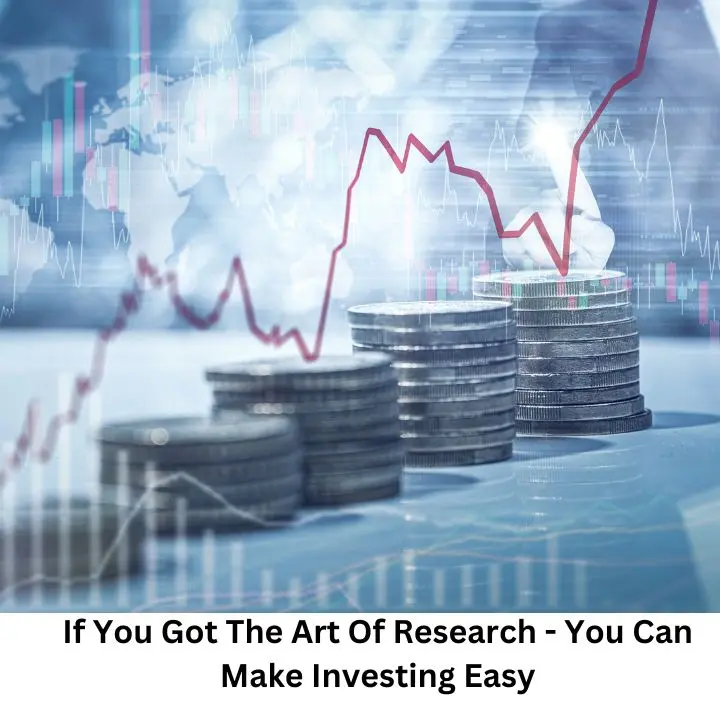Value-Driven Investment Strategies to Grow Your Portfolio

Investing has long been one of the most established strategies for developing a portfolio. It entails shopping stocks that look undervalued compared to their intrinsic worth. The concept is that the marketplace will subsequently understand their proper price, permitting buyers to enjoy the next rise in inventory expenses. This technique, popularized through mythical investors like Benjamin Graham and Warren Buffett, emphasizes persistence, discipline, and cautious analysis. Investors exploring value investment strategies often seek reliable resources to guide their decisions. Platforms like Swapitor offer valuable connections between traders and educational experts, helping them stay informed in the ever-evolving investment landscape.
Understand the basics of value investing.
Value investing is rooted in the precept of purchasing undervalued belongings and protecting them until the marketplace realizes their full value. Rather than chasing tendencies or investing within the modern-day fads, cost buyers look for opportunities in which inventory charges do not absolutely reflect an employer’s long-term boom capability or its property.
The basis of this approach lies in studying an organization’s financial health and information’s basics, consisting of sales, profits, coin float, and marketplace position. The aim is to become aware of stocks that are briefly overlooked or undervalued because of quick-term market conditions, bad investor sentiment, or financial downturns.
Key Metric: Intrinsic Value
One of the important elements in value investing is the concept of intrinsic fee, which refers to the actual worth of an organization primarily based on its essential information. Investors estimate an inventory’s intrinsic cost using a variety of strategies, together with discounted coin waft (DCF) evaluation, income valuation, and book value calculations. The idea is to shop for stocks priced beneath their intrinsic price and maintain them for a long time, awaiting that the market will in the end regulate the price upwards.
Conduct a thorough fundamental analysis.
Thorough research is an important element of fee investing. To become aware of undervalued stocks, buyers rely closely on fundamental evaluation, which examines the economic statements and universal fitness of a company.
Key metrics to consider:
Price-to-Earnings (P/E) Ratio:
The P/E ratio is one of the most widely used metrics for comparing an inventory’s valuation. It compares an agency’s percentage charge to its profits consistent with proportion (EPS). A low P/E ratio may additionally imply that an inventory is undervalued relative to its income potential.
Price-to-Book (P/B) Ratio:
The P/B ratio compares a company’s marketplace cost to its ebook cost. A P/B ratio below 1.0 frequently shows that a stock is undervalued, especially in capital-intensive industries.
Dividend Yield:
Companies with sturdy fundamentals often distribute a component of their profits to shareholders inside the shape of dividends. A high dividend yield may additionally indicate an undervalued inventory, as it may signal monetary fitness and a commitment to returning capital to shareholders.
Debt-to-Equity Ratio:
This ratio measures a corporation’s leverage by comparing its total liabilities to its shareholder equity. Lower debt tiers advise a greater solid agency, which is especially crucial for value buyers looking to minimize danger.
Seek companies with strong competitive advantages.
One of the cornerstones of price-making an investment is identifying companies with a durable aggressive benefit, regularly referred to as a “moat.” These companies are well-placed to maintain profitability and marketplace dominance over the long term, even at some stage in durations of financial downturn or improved opposition.
Types of Competitive Advantages:
Brand Loyalty:
Companies with well-known and relied-on brands, like Apple or Coca-Cola, tend to maintain a loyal consumer base and a sustained competitive advantage.
Cost Advantages:
Companies that could produce goods or services at a lower fee than competition, inclusive of Walmart, tend to perform higher over the long term.
Proprietary Technology or Intellectual Property:
Firms with proprietary era or valuable patents, like pharmaceutical organizations, regularly experience protection from competitors.
Focus on Long-Term Growth Potential
While fee investing emphasizes buying stocks at a reduction, it’s equally essential to raise awareness among corporations with robust long-term boom capability. Some stocks might also seem undervalued for a motive, which includes declining industries or poor management. As a price investor, you want to distinguish between companies that are quickly undervalued and people that might be in everlasting decline.
Identifying Growth Potential:
Earnings Growth:
Look for corporations that have proven constant profit growth over the past several years. This is an indication that the business is developing and able to deliver destiny returns.
Industry Trends:
Consider the general industry in which the employer operates. Industries like era, healthcare, and renewable power often present opportunities for growth because of ongoing innovation and demand.
Conclusion
Investing is a powerful approach for constructing wealth over a long time. By specializing in undervalued shares with sturdy basics, undertaking thorough research, and preserving a varied portfolio, traders can gain constant growth in their portfolios. Patience, field, and keen information on an organization’s intrinsic value are important in navigating market fluctuations and achieving success in price investing. Whether you’re new to investing or seeking to refine your technique, price investing gives a solid basis for lengthy-term portfolio growth.




